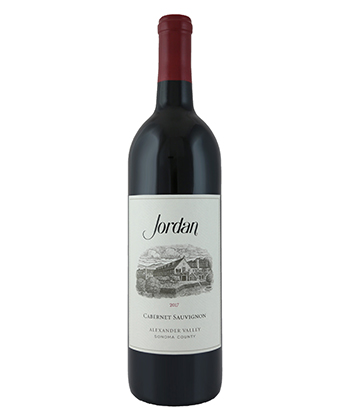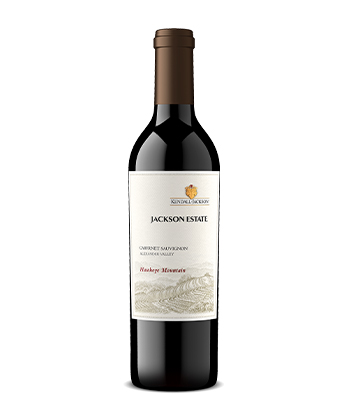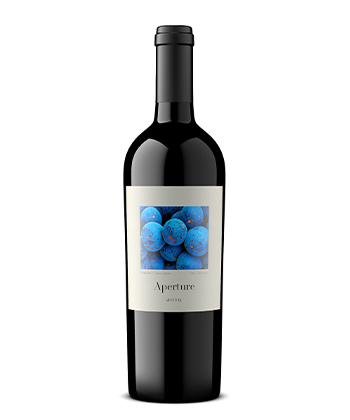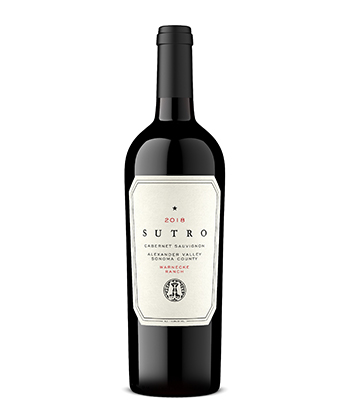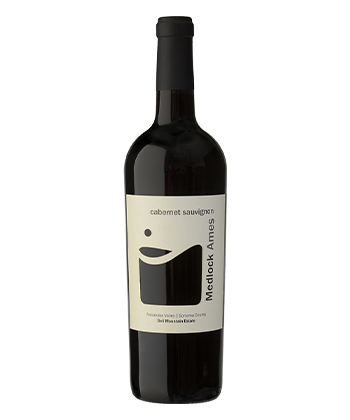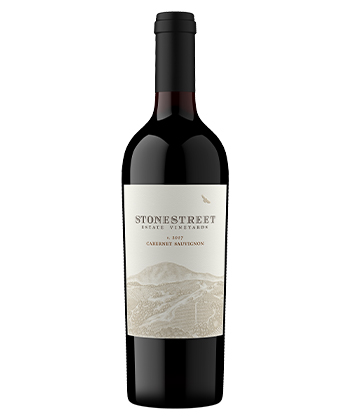It’s hard to talk about California wine without immediately turning to Napa Valley. And with good reason. California was in large part put on the global wine map thanks to the 1976 Paris Tasting, when a Napa Valley Chardonnay and Cabernet Sauvignon bested their French counterparts to the whole world’s surprise.
But over the past few years, there has been growing chatter about Sonoma County Cabernet Sauvignon. And while appellations throughout Sonoma County are churning out bright, elegant, superbly balanced Cabs, one AVA in particular is becoming the darling of the region — the Alexander Valley.
If Napa Valley Cabs are known for their brooding, dark fruit, full body, and plush tannins, Sonoma Cabs, by and large, take on a slightly leaner, more structured quality, with a refreshing lift from the bright acidity that comes from the strong diurnal shift between daytime and nighttime temperatures. In a region mostly associated with Burgundian varieties — Pinot Noir and Chardonnay — this stylistic difference seems fitting.
Don’t miss a drop!
Get the latest in beer, wine, and cocktail culture sent straight to your inbox.
The climatic distinction is particularly prominent in Alexander Valley. Being so far east, the region experiences warm and even hot daytime temperatures, allowing grapes to develop the ripe characteristics typical of a California Cabernet Sauvignon. However, there is no significant mountain range separating the region from the Pacific Ocean, which results in a prominent maritime influence that creates cool mornings and nights, providing that juicy acidity that makes a big, bold Cabernet Sauvignon a little bit more quaffable.
While wine is, of course, subjective, coming down to a matter of preference between ripe or fresh styles, the essential building blocks of a great wine — concentration, length, structure, balance, longevity — are not. And these building blocks are undeniably present in Alexander Valley Cabernet.
“It is becoming more known, the quality of the terroir in the great areas of Sonoma, for Bordeaux varietals, especially as we see more and more the effects of climate change,” says Jesse Katz, owner and winemaker at Aperture Cellars in Healdsburg. “With Napa being almost fully planted out and pricing over double, this is bringing a lot of new interest to this amazing area from the winery and consumer side.”
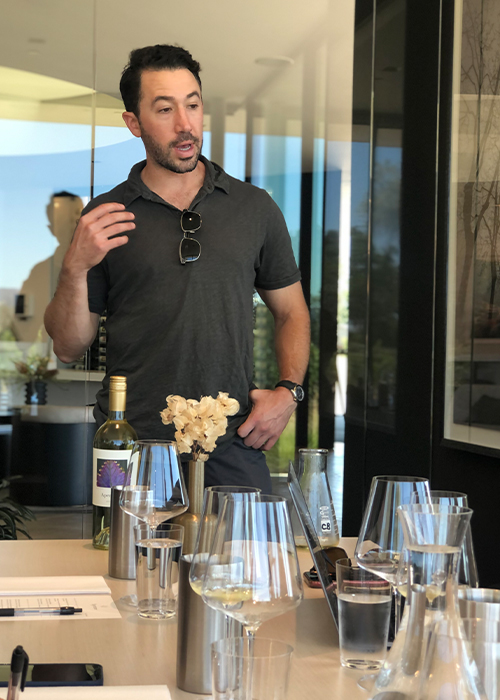
Katz has an impressive pedigree in the wine world, in particular when it comes to Bordeaux varieties. He cut his teeth at Petrus in Pomerol, Screaming Eagle in Napa, and Lancaster Estate in Sonoma, before branching out on his own with Aperture Cellars in Alexander Valley, a region he feels has the potential to make some of the world’s greatest wines. In fact, he’s so sure of this, he is growing somewhat of an empire in Sonoma County with the recent purchase of the 75-acre Farrow Ranch.
Even Napa Valley winemakers are taking notice, with some adding Alexander Valley Cabernet to their Napa Valley-labeled wines, thanks to the quality levels and lower grape prices relative to Napa. In fact, some Napa winemakers are even over-paying for the Sonoma fruit, out-bidding Sonoma winemakers in the process.
“We are contacted multiple times per year from Napa wineries looking for ‘high-end’ Alexander Valley Cab,” says Sonoma native and fifth-generation grape-grower Bret Munselle of Munselle Vineyards. “They are almost always willing to pay a premium relative to what we are receiving here from Sonoma County wineries, but are most often looking for small lots that they can blend into their Napa programs and still call the wine a Napa Valley wine.” (This is perfectly legal, given a winemaker need only include 85 percent of grapes from a given appellation in order to label it as such, leaving a full 15 percent that can come from somewhere else.)
While the competition for Alexander Valley grapes from Napa wineries is no doubt a good thing when it comes to driving grape prices up overall, some loyalist growers would rather see the grapes stay local, and are even willing to take less to keep the grapes for wines labeled Sonoma County.
“Growers are always enticed by higher grape prices, but the response is a mixed bag from my perspective,” says Munselle. “I love the interest, but I really want the fruit that we grow here in Alexander Valley to support Cabernet programs here in Sonoma County. It is way more exciting to me to know our grapes are a major component of a delicious Sonoma County branded Cabernet, than to be a minor part of a Napa Valley Cabernet program, and I would be willing to take a small price-per-ton hit to enjoy that satisfaction.”
Relationships Matter
Many consumers don’t even realize that the bottle of wine on their dinner table isn’t necessarily produced from grapes grown on site at the winery on the label, and so are unaware of the grower-winemaker relationship that exists behind the scenes in most major wine-producing regions. These relationships take years to develop, are an integral part of the wine industry, and, as in all relationships, take a tremendous amount of trust and loyalty in order to really work.
“We have such longstanding relationships with growers here in Sonoma County, most of whom are proud to bring their fruit to a Sonoma County winery,” says Maggie Kruse, winemaker at Jordan. “We try not to work with anyone who is going to chase a dollar for a one-year contract in Napa.”
From a winemaking perspective, there are stylistic differences as well as logistical ones that may not make chasing that dollar even practical. Kruse explains that Napa winemakers may pay more per ton, but some prefer to wait longer to pick as well, which can cause a loss of weight in grape clusters or force a grower to drop too much fruit due to unrealistic expectations of thinning.
“A simple higher price per ton is not always the final answer,” says Kruse, emphasizing the relationship and trust factor, as well as the stylistic preferences of one region versus the other. For example, when Jordan first started working with Sonoma grower Rio Lago, they said they could get a higher price for their grapes in Napa — and Jordan encouraged them to do just that. “But, they decided against it,” says Kruse. “In fact, in the second year of working with Rio Lago, a big rainstorm was coming in the middle of harvest, and we were ready to pick, while the Napa winery wanted to wait. Rio Lago gave us an extra load because we felt the fruit was ready for our wine program.”
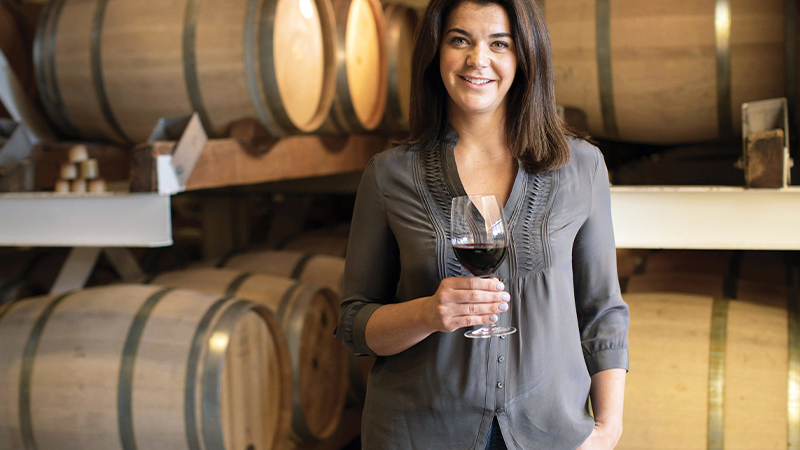
Looking ahead
When it comes to what’s happening with the purchase of grapes from Napa winemakers, Katz sees the upside. He believes that everyone wins in the current scenario since quality overall is increasing, more attention is being paid in the vineyard, and, at least for now, there is still great value to be found in Sonoma. In fact, top-scoring Cabernet Sauvignon from Sonoma can often be found at a fraction of the price of similar wines from Napa.
“I think you’re seeing more focus than ever on the farming and winemaking of the top sites for Bordeaux varietals in Sonoma,” Katz says. “Some of the best Cabernet Sauvignons in the world are being made in both Napa and Sonoma right now, and the consumer is winning because the focus on quality is at an all-time high in Sonoma for Bordeaux varietals, as it has been for many years in Napa. This will continue to grow, and the uniqueness and elegance that Sonoma brings to the varietal offers a new freshness to the luxury world of California Cabernet.”
Munselle echoes this sentiment. “For me the solution is to keep making awesome Sonoma County and Alexander Valley Cabernets, and to enjoy the position of being a more achievable Cabernet due to price but an equally delicious if not better wine in the bottle,” he says. “I think we, in Sonoma County, can continue to enjoy the push that we can receive from Napa with regard to price, and push for the reputation of making amazing Cabs that people can enjoy more regularly.”
Six Alexander Valley Cabernet Sauvignons — All Under $100 — You Need to Try Right Now:
Jordan Winery 2017 Cabernet Sauvignon, $59
Kendall Jackson 2018 Jackson Estate Hawkeye Mountain Cabernet Sauvignon, $65
Aperture Cellars 2019 Soil Series Cabernet Sauvignon, $70
SUTRO 2018 Warnecke Ranch Cabernet Sauvignon, $65
Medlock Ames 2018 Bell Mountain Cabernet Sauvignon, $60
Stonestreet Estate Vineyards Cabernet Sauvignon, $42
This story is a part of VP Pro, our free content platform and newsletter for the drinks industry, covering wine, beer, and liquor — and beyond. Sign up for VP Pro now!



